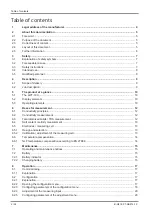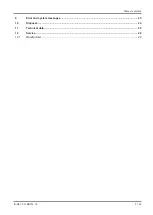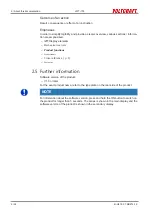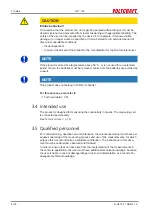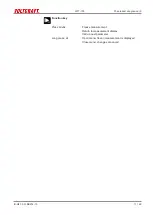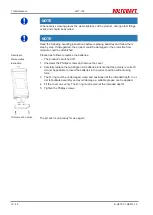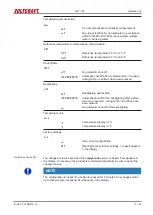
6 | Bases for measurement
LWT-100
12 / 26
B-H87.0.01.DB214-1.0
6 Bases for measurement
6.1 Conductivity principles
Conductivity γ
Conductivity describes the capability of a material to conduct electrical current. It is
also the inverse of specific resistance. The conductance is the inverse of the meas-
ured resistance R.
Formula
γ = l / (R*A)
l = length of the material
A = cross section
R = measured resistance
Unit [γ] = Siemens / metre = S / m
Normally, the values for liquids are specified in µS / cm or in mS / cm.
6.2 Conductivity measurement
The conductivity measurement is a comparatively uncomplicated measurement. The
standard electrodes are stable for correct use for a long time and can be calibrated
over the gradient correction.
Range
1
2
3
0 to 2000 µS/cm
0.00 to 20.00 mS/cm 0 to 200 mS/cm
With the automatic range selection, the range with the best resolution is selected auto-
matically.
6.3 Total dissolved solids / TDS measurement
The total dissolved solids measurement - TDS measurement - determines the total
dissolved solids, which also called evaporation residue, based on the conductivity and
a conversion factor CtdS of the total dissolved solids. Well-suited to conduct simple
concentration measurements of salt solutions. The display shows mg/l
Range
1
0 to 2000 mg/l
Display value TDS = conductivity [in µs/cm, nLF temperature compensation at 25°C] *
CtdS menu entry
With selection of TDS, the necessary temperature compensation is selected automat-
ically. Menu settings for temperature compensation are ignored.
The following approximations apply:
CtdS
0.50
Monovalent salts with 2 ion types = NaCl, KCl or similar
0.50
Natural water of surface water, drinking water
0.65 to 0.70
Salt concentration of aqueous fertiliser solutions
NOTE
These are guideline values for estimates, but are not suitable for precise measure-
ments. The conversion factor for the respective type of solution and the examined
concentration range must be determined for precise measurements. This can take


